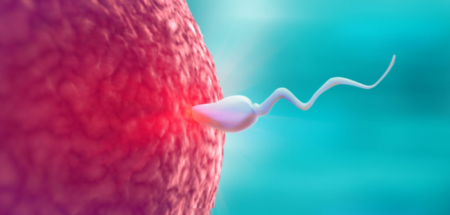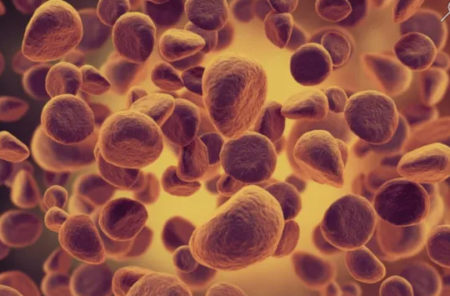As humans, we often ponder over the mysteries and complexities of life. What exactly defines “life” and what sets living beings apart from inanimate objects? The answer lies in the characteristics that define life itself. How is a living being defined? What do mushrooms, daisies, cats and bacteria have in common ? These are all living beings, or organisms . It may seem difficult to think of similarities between such different organisms, but in reality they have many properties in common. Living organisms are similar to each other because all organisms evolved from the same common ancestor that lived billions of years ago.
Characteristics of Life

From biology , a living being has classically been defined as one that is capable of being born, developing, reproducing and dying ; so that life would be understood as the set of those capacities. Human life, however, is often seen as a broader concept, with highly complex philosophical components.
The characteristics of life define what constitutes a living organism. These characteristics are fundamental to all forms of life, from the simplest single-celled organisms to complex multicellular organisms like humans. The following are widely recognized characteristics of life:
- Organization: Living organisms are composed of one or more cells, which are the basic units of life. The cells are organized into complex structures that perform various functions.
- Metabolism: All living organisms carry out metabolism, which includes all the chemical processes that occur within a living organism to maintain life. These processes involve the conversion of energy from one form to another and the building up and breaking down of substances.
- Homeostasis: Living organisms regulate their internal environment to maintain a stable, constant condition, despite changes in the external environment. This includes the regulation of temperature, pH, hydration, and other necessary conditions for life.
- Growth: Living organisms grow and develop, following specific instructions coded for by their genes. Growth may involve an increase in size, an increase in cell number, or both.
- Reproduction: Living organisms reproduce, creating new individuals either sexually (involving the combination of genetic material from two parents) or asexually (without the fusion of gametes, from a single parent). Reproduction ensures the continuation of a species.
- Response to Stimuli: Living organisms respond to environmental stimuli, which can include physical, chemical, and biological changes in their environment. This response can be simple, like a plant bending toward light, or complex, like an animal fleeing from a predator.
- Adaptation: Over generations, living organisms evolve through the process of natural selection, leading to adaptations that enhance their survival and reproduction in specific environments. These adaptations can be structural, behavioral, or physiological.
- Energy Processing: All living organisms use energy in some form to power their metabolic processes. This often involves taking in energy from the environment (e.g., through photosynthesis in plants or consumption of food in animals) and converting it into a form that can be used to support life’s processes.
-
Minimum unit: the cell
These characteristics work together to define what is considered a living organism. Any entity that exhibits all of these characteristics is generally considered alive.
List of characteristics of living; Characteristics of Life.

ow is a living being defined? What do mushrooms, daisies, cats and bacteria have in common ? These are all living beings, or organisms . It may seem difficult to think of similarities between such different organisms, but in reality they have many properties in common. Living organisms are similar to each other because all organisms evolved from the same common ancestor that lived billions of years ago.
All living organisms:
- They need energy to carry out life processes.
- They are made up of one or more cells .
- Respond to your environment.
- Grow and reproduce.
- Maintain a stable internal environment.
Living beings need resources and energy.
Why do you eat every day? To obtain energy. Energy is the ability to do work. Without energy, no “work” could be done. Although doing no “work” may sound good, energy-fueled “work” includes everyday activities, such as walking, writing, and thinking. But you’re not the only one who needs energy. To grow and reproduce and carry out the other process of life, all living organisms need energy. But where does this energy come from?
The source of energy differs for each type of living being. In your body, the source of energy is the food you eat. This is how animals , plants and fungi get their energy:
- All animals must eat for energy. Animals also eat to obtain building materials. Animals eat plants and other animals.
- Plants don’t eat. Instead, they use the sun’s energy to make their “food” through the process of photosynthesis .
- Mushrooms and other fungi obtain energy from other organisms. This is why you often see mushrooms growing on a fallen tree; the rotten tree is its source of energy.
Living things are made of cells.

If you zoom in very closely on a plant leaf, or the skin on your hand, or a drop of blood, you will find cells (Figure below). Cells are the smallest structural and functional unit of all living organisms. Most cells are so small that they are usually visible only through a microscope . Some organisms, such as bacteria , plankton that live in the ocean, or Paramecium , shown in Figure below, are unicellular, made of a single cell. Other organisms have millions, billions, or trillions of cells.
All cells have at least some structures in common, such as ribosomes , which are the sites where proteins are made. All cells also have DNA and proteins . You can clearly see the blue nucleus in these blood vessel cells (Figure below). The nucleus can be described as the “information center,” containing the instructions (DNA) for making all of a cell’s proteins, as well as the amount of each protein it should make. The nucleus is also the main distinguishing feature between the two general categories of cells; Cells that lack a nucleus are known as prokaryotic cells.
Although the cells of different organisms are built differently, they all have certain general functions. Each cell must obtain energy from food, be able to grow and divide, and respond to its environment. More about cell structure and function will be discussed in additional concepts.
Living organisms respond to their environment
All living organisms are capable of reacting to something important or interesting in their external environment. For example, living organisms constantly respond to their environment. They respond to changes in light, heat, sound, and chemical and mechanical contact. Organisms have means of receiving information, such as eyes, ears, taste buds, or other structures.
Living things grow and reproduce
All living things reproduce to make the next generation. Organisms that do not reproduce will become extinct. As a result, there are no species that do not reproduce (Figure below). Some organisms reproduce asexually ( asexual reproduction ), especially single-celled organisms, and make identical copies (or clones) of themselves. Other organisms reproduce sexually ( sexual reproduction ), combining genetic information from two parents to make genetically unique offspring.
Living beings maintain stable internal conditions
When you’re cold, what does your body do to keep you warm? You shiver to warm your body. When you are too hot, you sweat to release heat. When any living organism becomes unbalanced, its body or its cells help it return to normal. In other words, living organisms have the ability to maintain a stable internal environment. Maintaining a balance within the body or cells of organisms is known as homeostasis . Like us, many animals have evolved behaviors that control their internal temperature . A lizard can stretch out on a sunny rock to increase its internal temperature, and a bird can fluff its feathers to keep warm.
Conclusion
The characteristics of life intricately weave together to create the tapestry of living organisms that surround us. From the cellular organization that forms their foundation to the remarkable ability to adapt and evolve, these essential elements define what it means to be alive. As we continue to explore and unravel the mysteries of life, let us marvel at the intricate beauty that lies within each living being.
